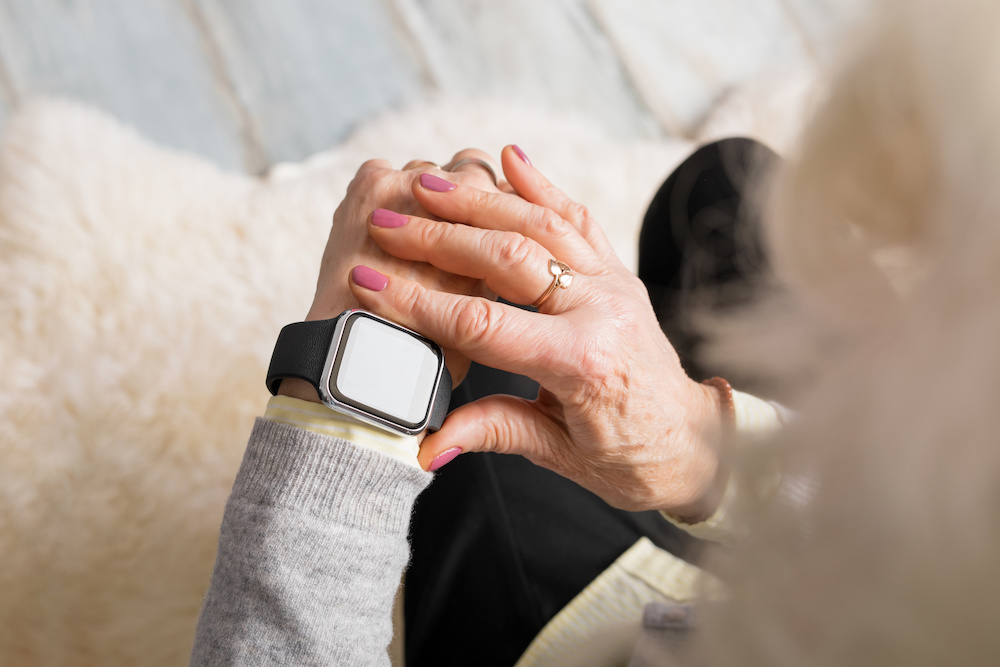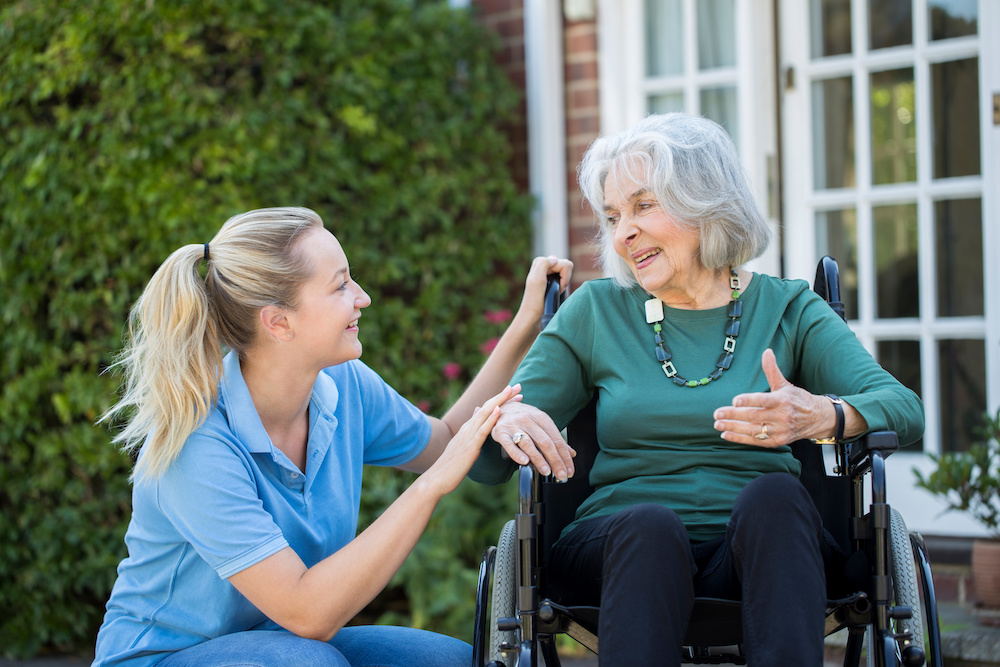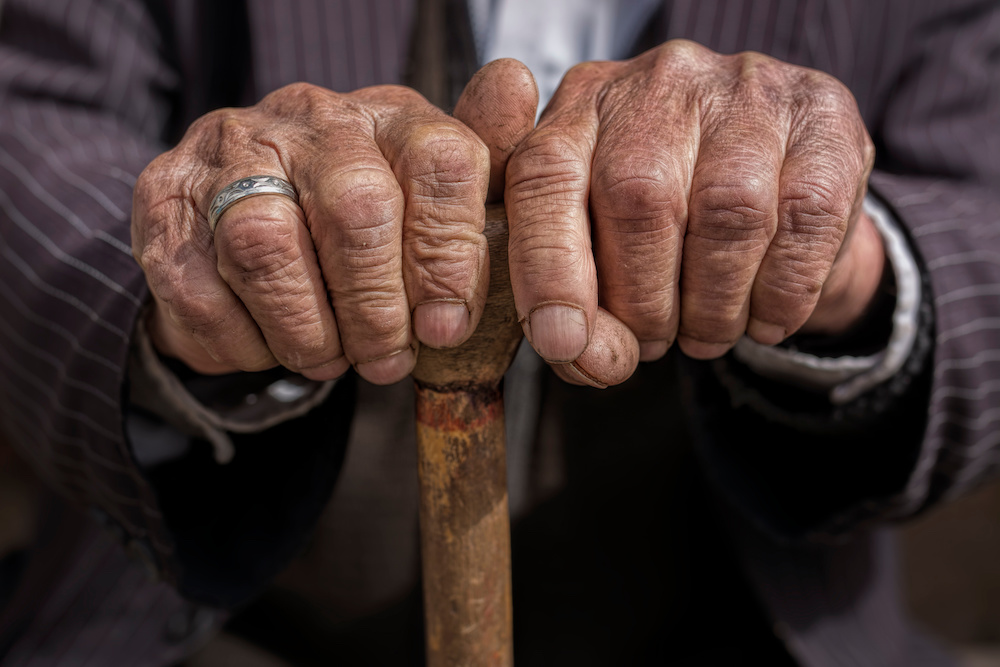Insights
‘Innovations have the potential to facilitate independence for elderly patients’

Agetech World meets Joop Tanis, director of MedTech Consulting, to discuss the considerations that innovators need to keep in mind when creating technology for the elderly.
How can technology improve the delivery of healthcare?
The ambition for the NHS, and other healthcare systems, to collaborate with the technology sector has always existed. Many of the technology solutions adopted by the NHS start development in industry, and technology has arguably always played a part in enhancing the delivery of healthcare.
Resources in healthcare systems are finite, and, as the UK population continues to age, technology has an important role to play in enabling the self-management of age-related diseases and health conditions, including remote monitoring, improving the efficiency of healthcare tasks such as patient monitoring, and democratising the ability to deliver care.
Innovation means that we can break down some of the established barriers to the delivery of healthcare in the current system.

What do tech companies need to keep in mind when creating technology for the older generation?
Technological solutions designed with the end-user in mind are more effective at improving overall patient care and multiple perspectives should be considered when developing new technologies. Identifying the main user of an innovation means that inventors, and developers, can gain valuable insight from the intended user group to comprehensively understand users’ needs from the beginning of the design process, which can help to highlight unanticipated flaws in the intended function of the technology.
Identifying problems before a product goes to market presents an opportunity to refine the design of the technology to ensure there are no barriers to its intended function and purpose.
For the elderly user group, it’s advisable to learn from other innovations which have had barriers to adoption. This can be due to several reasons, and it is important that developers do not make assumptions about this age group’s technical abilities.
One reason why older people may not wish to engage with new technology is a lack of understanding, but it could also be attributed to a desire to continue with an established routine, or a preconception about the technology due to a previous negative experience. Frustrated users may be more motivated to share their experiences than satisfied users, which can disproportionately affect the insight you receive from the user group.

Another consideration for innovators and developers is the indirect user group associated with the elderly, which includes relatives, carers and care home staff. It shouldn’t be assumed that these individuals will embrace new technology, unless they see benefits in doing so, such as improved communication, closer involvement or increased efficiency.
Finally, technology companies need to consider the longevity of their software as adaptability to software updates is likely to disproportionately negatively affect the elderly, and disenfranchise the user group.
A collaborative design process can address some of these challenges, by matching users’ needs identified through user input; developing a device and engaging with user groups throughout the process; and gathering actual user feedback during the evaluation stage to validate that the innovation meets the original users’ need. Access to key stakeholders in the end user group is essential for the successful development of technology that will deliver patient benefits, and positive outcomes.
How can technology help both carers and patients?

Social isolation contributes to depression and a decline in physical health and wellbeing, and, while technology cannot replace human interaction, it can enable efficiency and capacity in the system to enable carers to allocate time saved for social interaction.
Elderly people benefit from a support system, which includes relatives, carers or members of the community. This complex support system is interdependent, and an extended hospital stay, or other disruption, can disorder the network and it cannot be easily rebuilt. Technological innovations can be deployed to diagnose, treat and self-monitor diseases and health conditions, to reduce disruption to a support system and maintain an individual’s independence.
What do you see in the future of healthcare for older people?
There will continue to be a gap between current technology, and the target user group, which needs to be bridged and innovators need to design technology to work for the experience, and environment, of the end user.
I believe that innovations in technology have the potential to facilitate independence for elderly patients, improve longevity and quality of life, and shorten care pathways for patients.
How can technology have an impact on longevity?

Advances in technology mean that the NHS, and other healthcare systems, have the capacity and ability to diagnose and treat health conditions and diseases earlier and more effectively. Diagnosing historically undiagnosed, or late diagnosed, diseases has extended lifespans, while previously terminal diseases can now be treated with more technologically advanced treatments available.
The NHS’s Long-Term plan sets out the system’s plans to support people aging well, and technology has an important role to play in this; enabling people to live independently at home for longer, and improving the quality of life for elderly patients.

Joop Tanis is the director of MedTech Consulting. Joop has both clinical and innovation experience and he successfully led the UK wide delivery of the SBRI Healthcare Programme.
News
Childhood loneliness linked to increased risk of dementia, study finds

Childhood loneliness increases the risk of dementia in later life, according to new research.
Adults who recalled being lonely and without a close friend in childhood faced a 41 per cent higher risk of developing dementia, even if they were no longer lonely as adults.
People who frequently felt lonely without close friends during youth showed accelerated cognitive decline — a worsening of memory and thinking — and started middle age with lower scores on these skills.
Researchers from universities in China, Australia and the US, including Harvard and Boston universities, analysed data from 13,592 Chinese adults tracked from June 2011 to December 2018.
The critical factor was the subjective feeling of loneliness itself. Those who reported often feeling lonely as children had a 51 per cent higher dementia risk, even if some had close friends.
However, those who only lacked close friends but did not feel lonely showed no significant difference in risk.
Nearly half of roughly 1,400 adults in the study reported being lonely and without close friends during childhood.
The 4.2 per cent who experienced both faced the highest risk of cognitive decline.
The link to dementia remained strong even for people who were no longer lonely in adulthood, suggesting early-life isolation can have lasting effects on brain health.
During childhood, the brain develops rapidly and is vulnerable to harm. Loneliness acts as a chronic stressor, flooding the developing brain with harmful hormones that can damage memory centres, and it reduces stimulation from social play and peer interaction that helps build robust neural networks.
A separate 2024 study of more than 10,000 older adults found that specific childhood hardships — including poverty, disruptive home environments or parental addiction — were directly linked to poorer cognitive function later in life.
Youth loneliness appears to be rising, partly linked to widespread social media use.
Among girls, 64 per cent aged five to seven, 67 per cent aged eight to 10, and 73 per cent aged 11 to 13 reported feelings of loneliness last year. More than a quarter of boys aged 11 to 17 in the US report feeling lonely.
Children face growing social isolation, with one in four Americans now eating every meal alone — a rate that has surged by over 50 per cent since 2003. Sharing meals with friends and family helps build bonds and positive memories in youth.
Fewer children are playing outside or joining team sports.
A recent study reported that one in three children do not play outside on school days, and one in five do not do so even at weekends.
The 2024 research found a direct, dose-dependent relationship between childhood adversity and cognitive problems in adults — the greater the early trauma, the greater the later risk.
For each significant increase in early trauma, individuals faced an eight per cent higher risk of daily memory issues and scored lower on objective tests of mental speed and focus.
News
Don’t miss you essential monthly agetech update

Your essential monthly update on agetech’s progress
Welcome to your monthly snapshot of the facts, figures, opinions, trends and challenges shaping the development of agetech.
Our new monthly tracker report aims to provide an concise update for busy agetech professionals on the many factors influencing your work.
Here you will find a concise breakdown of deals, developments and opportunities from the last 30 days; and insight and opinion from leading thinkers in the field.
We hope you find something useful and/or inspiring below – and welcome any feedback about what else you’d like to see included.
Research
Snoring, silence, and the menopause taboo: The hidden health crisis affecting millions

By Professor Ama Johal, clinical lead and dental sleep expert at Aerox Health
During menopause, it’s very common for women to notice significant changes to their sleep patterns and experience things like restless nights, loud snoring, or simply waking up feeling exhausted.
What most don’t realise, however, is that these symptoms can signal something far more serious – obstructive sleep apnoea (OSA), one of the most impactful and consequential sleep-related breathing disorders.
Women across the world are unknowingly fighting an uphill battle. Around 90 per cent of females with moderate to severe sleep apnoea remain undiagnosed.
This collective lack of awareness is due to a plethora of factors including archaic taboos around the subject and lack of education or omission of menopause in sexual education.
Ultimately, this combination leaves women underprepared and vulnerable to the biological, social and medical realities associated with the menopause.
Now more than ever, we must confront this silence head-on and recognise the hidden sleep crisis affecting so many women globally and the opportunity to address it.
The hidden sleep crisis
Snoring that develops or worsens during menopause can progress into OSA due to a decline in estrogen and progesterone which reduces muscle tone in the throat and in turn makes the obstruction or collapse of the airways more likely during sleep.
Yet this link between menopause and sleep disorders remains largely overlooked, leaving millions of women undiagnosed, untreated, and unaware that their sleep struggles are more than just “part of getting older”.
In my practice, I see the consequences of this misunderstanding far too often.
I hear from many female patients who have been suffering in silence, without the knowledge that they could seek help. In fact, I often encounter the common misconception that snoring is a man’s issue.
This preconceived notion perpetuates a persistent gender bias in sleep-related health research.
As ENT consultant and sleep surgeon at University College London hospitals, Ryan Chin Taw Cheong recently highlighted, the development of snoring is reason enough to consult your doctor. It’s time for this pervasive issue to emerge from the dark.
So why don’t women seek help?
When considering why many women do not seek help for their symptoms, there are two overarching reasons.
Firstly, the information and knowledge is not widely available for sufferers to realise that snoring can be a medical issue which can be assessed and subsequently readily treated.
Secondly, there is a potent stigma surrounding both the menopause and snoring which is an inhibiting factor amongst sufferers, discouraging open discussion.
Perhaps unsurprisingly, menopause is not included in traditional sex education in schools. Being unaware of what is ‘normal’ and what could require medical attention is widespread amongst my patients with sleep disorders, yet this information is not freely disseminated outside of clinics.
Unfortunately, cognitive fog and irritability – symptoms of snoring and obstructive sleep apnoea – are too often written off as stress, anxiety or ‘just the menopause’.
Avoiding sharing symptoms with medical providers, combined with online misinformation, often results in individuals suffering in silence or worse, turning to unregulated miracle menopause cures that exacerbate the risks of undiagnosed OSA.
These so-called ‘cures’ reinforce the harmful notion that the menopause is a defect which needs to be fixed rather than a natural life stage.
The health costs of ignoring snoring
A breadth of research links untreated OSA to cardiovascular disease, hypertension and cognitive decline.
However, aside from the medical risks, snoring and sleep apnoea can have profound social and emotional consequences.
For women, the shame in snoring, a symptom often mischaracterised as a ‘male issue’, can significantly affect self esteem and mental health.
Partners may also suffer if the snoring is disruptive to their sleep, in some instances causing rifts in relationships and a phenomena known as ‘sleep divorces’ (sleeping in separate beds or rooms).
In fact, according to a recent study commissioned by 32Co, 47% of recently divorced Brits cite interrupted sleep linked to snoring or sleep disorders as contributing to their relationship breakdowns, with 85 per cent believing ‘sleep divorces’ contributed to ultimate separation.
Sleep specialists seek to manage and monitor the symptoms of sleep disorders and OSA to minimise disruption to an individual’s personal and public life.
Screening menopausal women for OSA is a preventative measure which leads to informed patients. It is not simply about getting better sleep but about the long-term health outcomes.
Breaking the silence: what needs to change
Drawing on the stories of those I meet in my clinic, I would like to outline five steps that we can take to address this silent epidemic.
First, the menopause and associated symptoms should be included in a comprehensive sex and health education.
This could be provided both in schools’ curricula and made readily available at health services catering to adults.
Second, throughout the course of history women’s issues have been chronically underserved.
More resources can be funnelled into conducting research to help us better understand the impact of the menopause on women’s physical and mental health.
Future research would also help to neutralise the gender bias of previous studies.
Third, launching public health campaigns and workplace initiatives to encourage employers to recognise sleep disorders as a significant element of menopause will help build awareness and reduce the impact of stigmas.
Fourth, myth-busting, shattering taboos, and normalising discussion about the menopause will be key.
We must view snoring as a gender neutral issue rather than a male stereotype and denounce harmful rhetoric and jokes that perpetuate stigma.
Fifth, we must better equip more localised healthcare providers up and down the country to both diagnose and treat OSA effectively.
Sleep disorders are not niche issues but a major public health concern with potentially severe consequences.
Quality of life amongst my patients is inextricably linked with sleep quality.
Recognising the relationship between snoring and OSA and the menopause is not simply about pathologising a natural stage of life, but providing women with the information, respect and medical care they deserve.
Only through more transparency and collaboration amongst researchers, educators and clinicians can we hope to close the gender gap in sleep medicine and bring this hidden crisis to light.

 Research2 months ago
Research2 months agoRound up: Joint venture to advance Klotho-based therapies, and more

 Markets & Industry1 month ago
Markets & Industry1 month agoHesperos wins grant to tackle drug-induced dementia

 News2 weeks ago
News2 weeks agoBlood tests ‘could revolutionise dementia diagnosis,’ expert says

 News2 months ago
News2 months agoBrain shape changes could offer early warning signs of dementia, study suggests

 News3 weeks ago
News3 weeks agoCanada approves Leqembi for early Alzheimer’s

 News6 days ago
News6 days agoTool predicts Alzheimer’s risk years before symptoms appear

 Wellness1 month ago
Wellness1 month agoHigh fat diet may keep brain young, study suggests

 Wellness3 weeks ago
Wellness3 weeks agoEthnic minorities more likely to underreport health problems, research finds


































